The Bugatti EB110: Ettore's Legacy
Its the 1990s. A fantastic era of revolutionary sports cars that practically blew the minds of almost every automotive journalist during the time.
Its the 1990s. A fantastic era of revolutionary sports cars that practically blew the minds of almost every automotive journalist during the time.
Ferrari wowed the automotive industry with the Ferrari F50, a limited edition supercar that was powered by a N/A V12 engine directly sourced from a F1 unit. Lamborghini’s flagship 90s car, the Diablo, was also a success history for the brand, for being the first Lamborghini to hit over 200 MPH. McLaren dominated the competition with the marvelous McLaren F1 by making it the world’s fastest car of the 90s, where Jaguar came across as a close competitor with their similarly fast Jaguar XK220.
The luxury sports car industry was abuzz, with constant rivalry and competition. It was an exciting but also an equally stressful time for these high profile manufacturers. All of them, from Italy to the UK were constantly aiming for the top, to be remembered as the car gods of the era and show the world what a high profile car company can do.
But amidst the fierce competition, one obscure company was overshadowed by the others, who claimed all the glory.
This private French company took their time in making a modern revival of Bugatti after continuous hiatuses, in a certain factory in the Italian municipality of Campogalliano, located within the famed city of supercars, Modena, Italy.
When they were finished, they resurfaced out of the shadows of inactivity to reveal the first high performance super car Bugatti has made in years.
The Bugatti EB110.
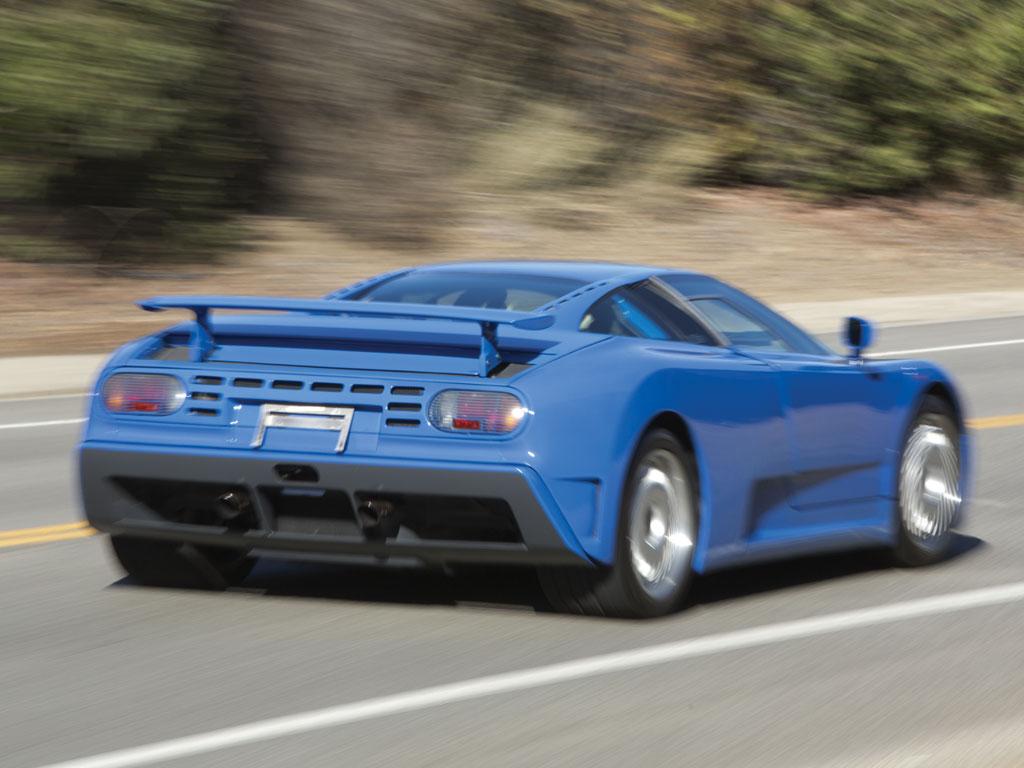
When it was finally publicly revealed to the world, Bugatti caught the automotive press by surprise.
Nobody was probably expecting the company, which had been shut down for several decades, to return from the dead and make a supercar out of the blue, but it turns out, it’s return wasn’t just for show.
The EB110 was more than a luxury sports car. To those who knew better, it was more than that.
The EB110 has a symbolic meaning to it. The car was introduced in 1991, 110 years after Ettore Bugatti was born.
Ettore Bugatti was the company’s founder, introducing the world’s first ever Bugatti, or shall we say, Bugattis; The Type 13, Type 22, and the Type 23 after World War I.
(Images below: from left to right, Bugatti Type 13, Bugatti Type 22, and Bugatti Type 23)
If you dissect the nomenclature of the Bugatti EB110, you’ll notice that EB stands for Ettore Bugatti, and 110 meaning it is the representation of Mr. Bugatti’s 110th birth anniversary.
The super car wasn’t just some revival project.
It was a legacy car. A car built to commemorate the life work of Ettore Bugatti.
The striking and unique styling of the car also promoted it’s image as a proper legacy car. It was like a whole new artwork. And Mr. Bugatti made his first cars with artistic design and flair as his top priority.
And, respecting his life goal, then- Bugatti CEO Romano Artioli set out to complete the task half-done by making the car look unique among it’s potential competitors yet maintain a distinct air of artistic symbolism in 1987.
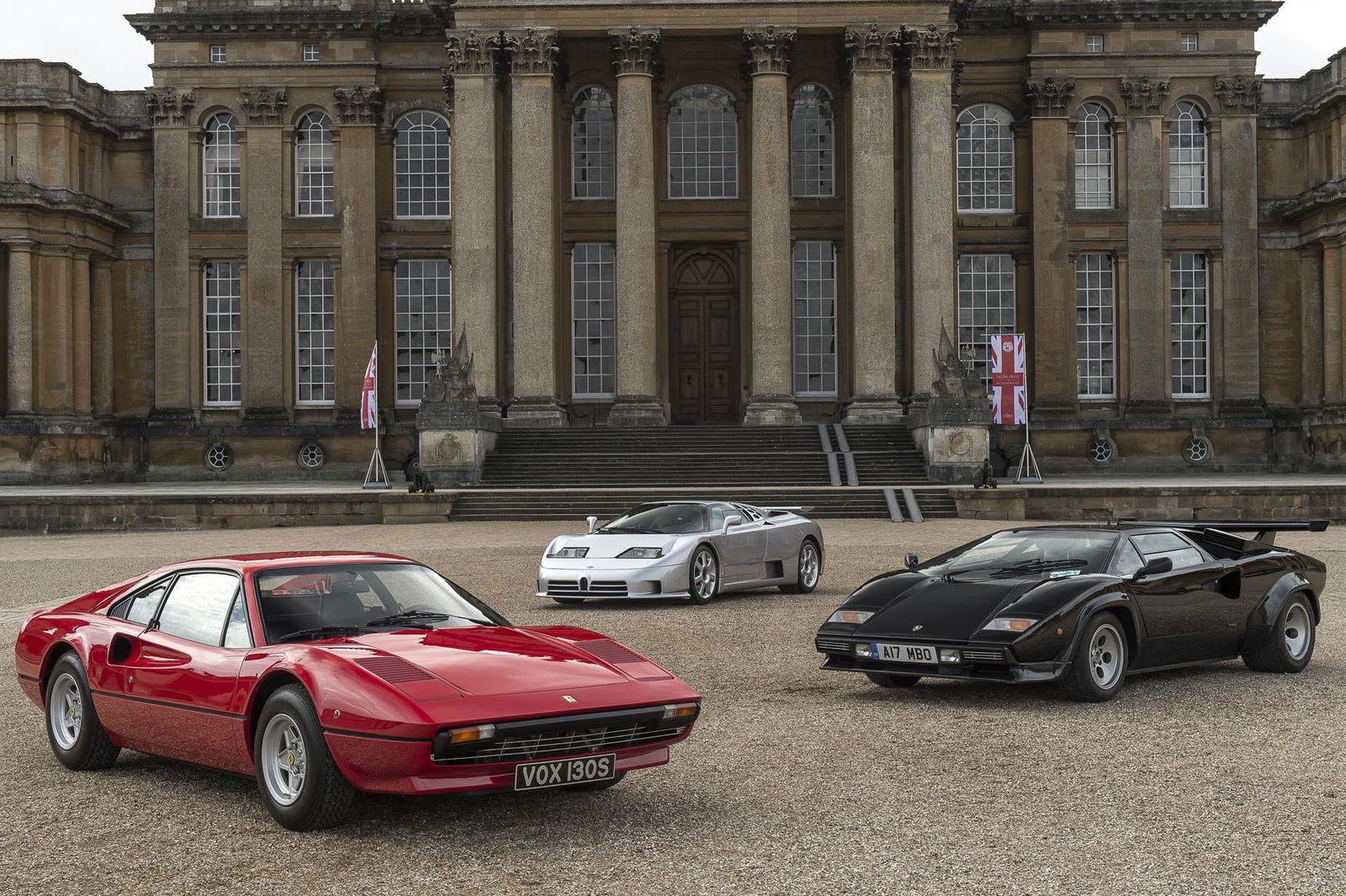
However, even though art was Bugatti’s top priority, performance was also an essential element equally valued. And the Bugatti EB110 was no stranger to high performance.
Equipped with a 60 valve 3.5L quad-turbo V12 with 12 individual throttle bodies, the mid engined supercar netted roughly 513 HP powering all four wheels. The car was equipped with double-wishbone suspension, and the carbon fibre chassis was made by an airplane company called Aérospatiale. That’s right, a supercar with airplane parts.
It had a top speed of 213 MPH and a 0-60 time of 3.2 seconds…
That meant that the EB110 had the same horsepower of the Ferrari F50 but with a higher top speed, beat the Lamborghini Diablo in terms of overall performance, out-accelerate the Jaguar XK220 by 0.3 seconds, and accelerate just as fast as the McLaren F1.
From out of the blue, comes out a maverick supercar that already poses a great threat towards the well known supercar giants. Nobody could have expected a car like that to be immediately toe to toe with legends. It was a commendable feat by Bugatti. It showed the world that the company was still dedicated to bringing Ettore’s works of art into the world with great pride and emphasis towards history and sophistication.
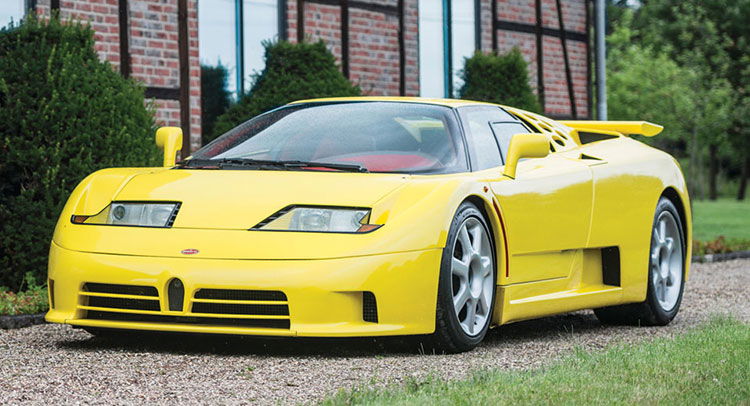
Soon enough, it gained a tidy amount publicity, particularly boosted thanks to iconic motorsport personalities such as Michael Schumacher, who bought a special edition EB110 SS, and also because of the son of American F1 champion Phil Hill, Derek Hill, who competed in the 1996 “24 Hours of Daytona” race in an EB110 with 2 other EB110 racers.
The Bugatti became a sensation in the luxury car segment for it’s looks, power, and uniqueness. Bugatti’s chutzpah proved to be successful, and it had its rightful place in the 90s era, among the others in the elite segment.
Unfortunately, tragedy soon befell upon the recently resurrected company. Despite being a successful mission, the EB110 project costed the company more money than it can make out of it, and CEO Artioli’s overambitious decision to buy Lotus to make a 4 door Bugatti, the EB112, hit the finances of Bugatti hard, which quickly led to bankruptcy.
Soon enough, in 1995, the company ceased production of any more Bugattis, and what was left of the company was sold to a German racing performance company, the now-defunct Dauer GmbH and to B Engineering, which made a rather obscure car called the Edonis.
In the end, Bugatti bit more than it can chew, and that, led to its downfall.
The company hid into the shadows once again…
…Until it resurfaced in 2005 with the prolific, W16 powered Veyron, this time, the company owned by Volkswagen.
Even to this day, despite the controversial stigma the Bugatti Veyron seems to have amongst petrolheads due to it being “abused” as a status symbol than a proper sports car, it should be known that Bugatti cars were more considered to be works of automotive art than lean, dedicated performance cars from the beginning. The luxury, the power, the symbolism… The elements that defined what makes a Bugatti, Bugatti, were perfectly harmonized and manifested into the EB110, where it eventually carried over to the similarly impressive and more modern Veyron.
Indeed, Ettore Bugatti's spirit lives on.
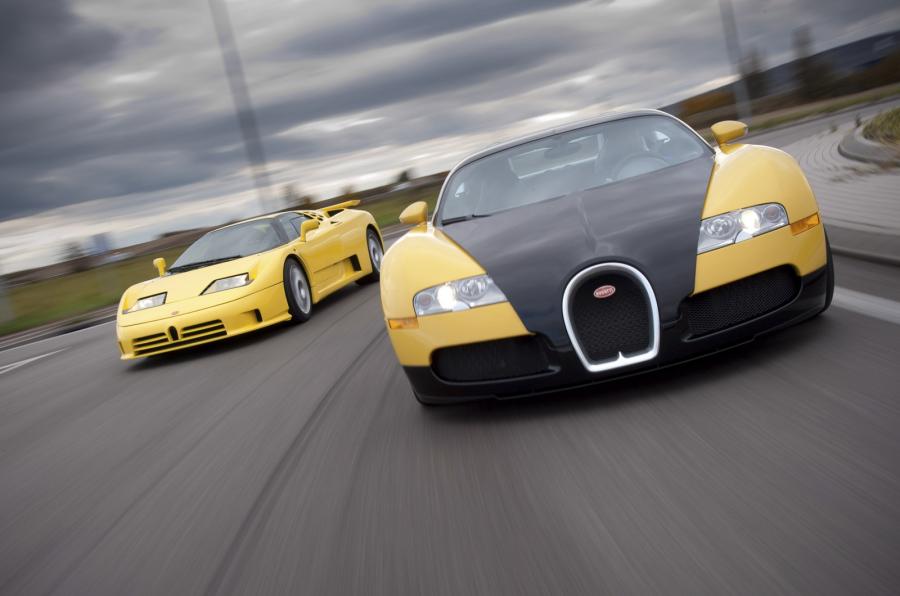
Thank you for reading this article all the way! This one took quite some work to do and 2 cups of Americano coffee.
I hope this was worth the read!
Thug Bird, out. (▀Ĺ▀ )
chirp chirp
See you guys!
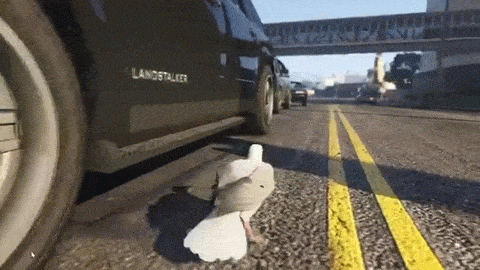
Comments
Great Writing Thug Bird!
W16 quad turbo swap it!!!! ( fastest car on forza horizon 1 and 2)
I like the EB110 better than the veyron tbh
The front looks like a little mouse door from Tom and Jerry.
They copied Nissan
Great article! Love this car. I prefer it to the Veyron actually lol
Could you give me the utorrent for initial d street stage? Thanks.
Damn illegal birds are taking our jobs! :D
Nice article thug bird, excellent as always
beauty 😍
Nice article!
Pagination